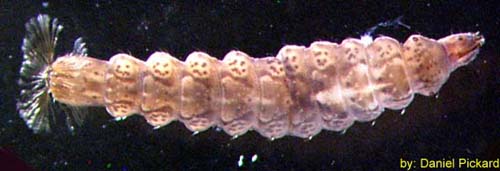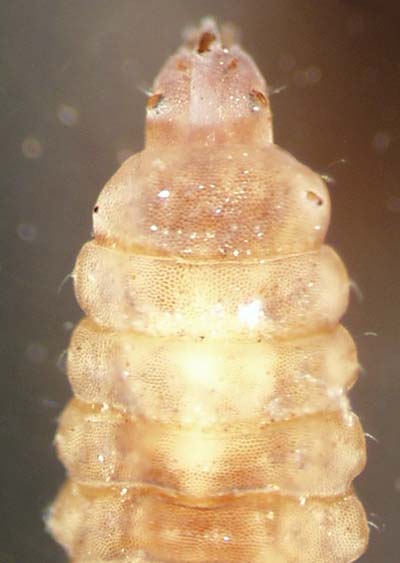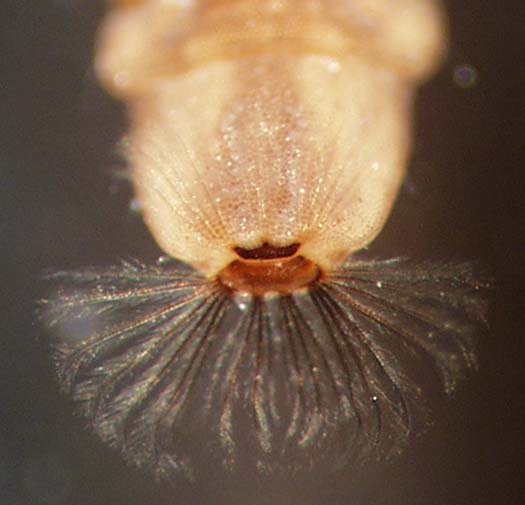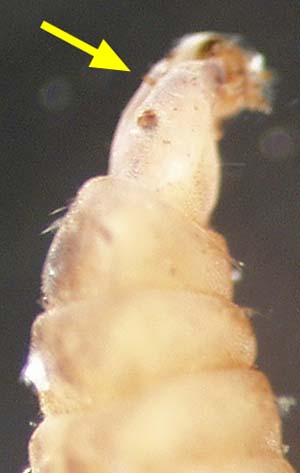
THE XERCES SOCIETY FOR INVERTEBRATE CONSERVATION Aquatic Invertebrates in Pacific Northwest Freshwater Wetlands |
| Identify taxa |
Stratiomyidae (soldier flies) |
The Stratiomyidae family includes both terrestrial and aquatic types. The larvae usually live in moist, terrestrial habitats, and may even be found in compost bins. The larvae of the truly aquatic soldier flies inhabit a wide range of natural aquatic habitats, including wetlands. The bodies of soldier fly larvae are relatively flat from top to bottom, and may have a leathery appearance. They have a well developed head capsule with short antennae. The thorax is generally wider than the head, giving them a "broad-shouldered" look. They often have a fringe or tuft of long hydrophobic hairs at the tip of their abdomen. They lack prolegs, but may have hooks on the underside of segments. There are fairly prominent spiracles on the first body segment behind the head. Soldier flies are very tolerant of human disturbance and can live in a variety of habitats. Because they mostly breathe air, soldier fly larvae aren't as severely impacted by low dissolved oxygen or heavy sedimentation as many other macroinvertebrates. They tend to prefer hard water with lots of calcium because they have the unusual ability to incorporate calcium carbonate into their skin for added protection. Genera found in still waters include Hedriodiscus and Sargus. |
Size: diverse (small to large) Identifying feature(s): No prolegs; well-developed head capsule; prominent spiracles Habitat: diverse (lake shores, mashes, ocean shores, hot springs) Tolerance to pollutants: tolerant |
  |
|
 |
|
© 2007 Xerces Society
Contact info@xerces.org




